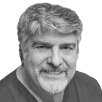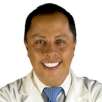Moving teeth with braces has long been considered a permanent ‘cure’ to crowded teeth. However, we now know that this traditional approach is neither permanent, nor a cure.
The literature now accepts that the only way to ensure satisfactory alignment is by use of fixed or removable retention for life;(1) Orthodontics has thus proven its reliance on these interventions.
When we graduate as dentists or specialists we are all implicitly bound to honor the trust placed in us as medical professionals.
Despite this, traditional orthodontics may cause root resorption, enamel damage, exacerbate periodontal disease, increase the chance of caries and devitalize teeth.(2) After this begins the need for lifelong maintenance of permanent retainers, the burden of which is borne by both the patient and the dental practitioner.
Despite our status as medical professionals, has the orthodontic profession veered away from being a health science and moved towards the realm of cosmetics?
Premolar extractions
There is no better example than the prevalence of premolar extractions in private practice. Epidemiological data is sparse, but according to the most contemporary survey conducted of US private practices, 25%-85% of our children have healthy teeth extracted in the name of orthodontics.(3)
The justification and rationale behind premolar extractions today rests with P.R. Begg’s 1954 assertion that the low incidence of malocclusion in primitive dentitions was due to gritty diets causing interproximal attrition; Begg suggested that this amounted to a premolar’s width in each quadrant.(4)
Begg’s research has been roundly refuted in the literature,(5) not least because his own theory refutes his results: both crowding and attrition increased with age.
Do premolar extractions lead to more stability?
No. Little’s definitive 1981 study showed satisfactory mandibular anterior alignment in less than 30% of extraction cases 10 years post-retention,(6) and in less than 10% of cases 20 years post-retention.(7) Many other studies have corroborated this conclusion.
Although hygienists, dentists and all other specialists strive to preserve teeth, this principle seems outside the orthodontic profession’s orbit of thinking.
What causes malocclusion?
“Whenever there is a struggle between muscle and bone, bone yields,” wrote Graber in his seminal 1963 manifesto on the influence of muscles on malformation and malocclusion.(8) In their review of the orthodontic influence of mandibular muscles, Pepicelli et al. (2005) corroborate it is “well accepted” that the position and function of the facial and mandibular muscles are “critical influences” on alignment and stability.(9)
The weight of the literature rests with the fact that muscle function and posture (the way patients swallow and posture their tongue) is the most significant cause of malocclusion.(10)
A time for change?
The Orthodontic tradition has been evolved by great minds throughout its 100-year history, such as Angle, Frankel, Graber, Rickets, Garliner and Little.
However, if we aspire to be considered a scientific medical profession, Orthodontics must continue to evolve with the research. This means re-orientation towards a more evidence and health-based approach.
Are we going to continue to accept relapse or retention until the death of the patient or the Orthodontist? The science is there: the cause is muscle function and the solution is Myofunctional Orthodontics.
About the Author
Dr Rohan Wijey works and lives in Australia on the Gold Coast. He practices at MRC's clinical arm, MRC Clinics, and teaches dentists and orthodontists from around the world about early intervention and myofunctional orthodontic appliances.
References
1. Little RM, Artun J, Riedel RA (1988) An evaluation of changes in mandibular alignment from10 to 20 years postretention. Am J Orthod 93 (5) 423-428
2. Australian Society of Orthodontists, Risks of Orthodontic Treatment, viewed 10 May 2011, www.aso.org.au/Docs/Orthodontics/Risks.htm
3. Weintraub JA, Vig PS, Brown C, Kowalski CJ (1989) Prevalence of orthodontic extractions. Am J Orthod 96 (6) 462-466
4. Begg PR, (1954) Stone age man’s dentition. Am J Orthod 40 298-312
5. Corruccini RS (1990) Australian aboriginal tooth succession, interproximal attrition, and Begg’s theory. Am J Orthod 97 (4) 349-357
6. Little RM, Wallen TR, Riedel RA (1981) Stability and relapse of mandibular anterior alignment – first premolar extraction cases treated by traditional edgewise orthodontics. Am J Orthod 80 (4) 349-364
7. Little RM, Artun J, Riedel RA (1988) An evaluation of changes in mandibular alignment from10 to 20 years postretention. Am J Orthod 93 (5) 423-428
8. Graber TM (1963) The ”three M’s”: Muscles, mal- formation, and malocclusion. Am J Orthod 49 (6)
9. Pepicelli A, Woods M, Briggs C (2005) The mandibular muscles and their importance in orthodontics: A contemporary review. Am J Orthod 128 (6)
10. Wijey R, 2010. Muscling in on the truth, viewed 10 May 2011, http://www.dental-tribune.com/articles/content/id/2998/scope/specialities/section/orthodontics
SANTIAGO — Biofotonica Chile launched here in September 2010 one of the most useful and original devices to ever come to the market: Milestone ...
"La innovación es la clave de nuestro éxito" sostuvo Juan Ignacio Zagari, CMO & Global Business Manager del laboratorio Brix ...
BALTIMORE, MD — The National Museum of Dentistry has been awarded a Give Kids A Smile Champion Grant from the ADA Foundation to enhance ...
La xerostomía es la sensación de sequedad bucal que se produce cuando las glándulas salivales no producen suficiente saliva[1] para mantener la boca ...
NEW YORK, N.Y., USA: Colgate-Palmolive has announced the launch of the Colgate Oral Health Network for Professional Education and Development — a new ...
LIMA - Dr. Miguel Angel Saravia Rojas, Dean of the Dental College of Peru, urged the country’s president, Ollanta Humala Tasso and Health Minister Dr....
LIMA, Peru — The Dean of the of Peru Dental College (COP), Dr. Miguel Angel Saravia Rojas, said that in the presidential message of July 28 ...
El XV Magno Congreso, organizado en Ciudad de Guatemala por el distribuidor de productos dentales Magno Dental, contó con conferencias y con una amplia ...
El nuevo congreso odontológico y exposición comercial Miami Dental Meeting llevará a la ciudad de Miami a una selección de lo mejor de la odontología ...
El odontólogo puertorriqueño es el primer hispano elegido como presidente del Greater New York Dental Meeting, el mayor congreso dental de Estados Unidos,...
Webinars en vivo
vie. 26 de abril 2024
10:00 CST (Mexico City)
Webinars en vivo
lun. 29 de abril 2024
10:30 CST (Mexico City)
Prof. Roland Frankenberger Univ.-Prof. Dr. med. dent.
Webinars en vivo
mar. 30 de abril 2024
11:00 CST (Mexico City)
Webinars en vivo
vie. 3 de mayo 2024
11:00 CST (Mexico City)
Webinars en vivo
mar. 7 de mayo 2024
18:00 CST (Mexico City)
Webinars en vivo
jue. 9 de mayo 2024
18:00 CST (Mexico City)
Webinars en vivo
lun. 13 de mayo 2024
7:00 CST (Mexico City)



 Austria / Österreich
Austria / Österreich
 Bosnia y Herzegovina / Босна и Херцеговина
Bosnia y Herzegovina / Босна и Херцеговина
 Bulgaria / България
Bulgaria / България
 Croacia / Hrvatska
Croacia / Hrvatska
 República Checa y Eslovaquia / Česká republika & Slovensko
República Checa y Eslovaquia / Česká republika & Slovensko
 Francia / France
Francia / France
 Alemania / Deutschland
Alemania / Deutschland
 Grecia / ΕΛΛΑΔΑ
Grecia / ΕΛΛΑΔΑ
 Italia / Italia
Italia / Italia
 Países Bajos / Nederland
Países Bajos / Nederland
 Nórdico / Nordic
Nórdico / Nordic
 Polonia / Polska
Polonia / Polska
 Portugal / Portugal
Portugal / Portugal
 Rumania y Moldavia / România & Moldova
Rumania y Moldavia / România & Moldova
 Eslovenia / Slovenija
Eslovenia / Slovenija
 Serbia & Montenegro / Србија и Црна Гора
Serbia & Montenegro / Србија и Црна Гора
 España / España
España / España
 Suiza / Schweiz
Suiza / Schweiz
 Turquía / Türkiye
Turquía / Türkiye
 Reino Unido e Irlanda / UK & Ireland
Reino Unido e Irlanda / UK & Ireland
 Internacional / International
Internacional / International
 Brasil / Brasil
Brasil / Brasil
 Canadá / Canada
Canadá / Canada
 EE UU / USA
EE UU / USA
 China / 中国
China / 中国
 India / भारत गणराज्य
India / भारत गणराज्य
 Japón / 日本
Japón / 日本
 Paquistán / Pākistān
Paquistán / Pākistān
 Vietnam / Việt Nam
Vietnam / Việt Nam
 ASIA / ASEAN
ASIA / ASEAN
 Israel / מְדִינַת יִשְׂרָאֵל
Israel / מְדִינַת יִשְׂרָאֵל
 Algeria, Morocco & Tunisia / الجزائر والمغرب وتونس
Algeria, Morocco & Tunisia / الجزائر والمغرب وتونس
 Oriente Medio / Middle East
Oriente Medio / Middle East
:sharpen(level=0):output(format=jpeg)/up/dt/2024/04/MarioElias-Fig1.jpg)
:sharpen(level=0):output(format=jpeg)/up/dt/2024/04/Fig-1_Ramirez-P.jpg)
:sharpen(level=0):output(format=jpeg)/up/dt/2024/04/Dental-filling.jpg)
:sharpen(level=0):output(format=jpeg)/up/dt/2024/03/Figura-1_SPW.jpg)
:sharpen(level=0):output(format=jpeg)/up/dt/2024/04/Power-Expander-01.jpg)










:sharpen(level=0):output(format=png)/up/dt/2022/01/Sprintray_Logo_2506x700.png)
:sharpen(level=0):output(format=png)/up/dt/2014/02/3shape.png)
:sharpen(level=0):output(format=png)/up/dt/2014/02/Du%CC%88rr_Dental.png)
:sharpen(level=0):output(format=png)/up/dt/2023/03/ACTEON_NEW-logo_03-2024.png)
:sharpen(level=0):output(format=png)/up/dt/2010/11/Nobel-Biocare-Logo-2019.png)
:sharpen(level=0):output(format=png)/up/dt/2013/04/Dentsply-Sirona.png)
:sharpen(level=0):output(format=jpeg)/up/dt/e-papers/338233/1.jpg)
:sharpen(level=0):output(format=jpeg)/up/dt/e-papers/336829/1.jpg)
:sharpen(level=0):output(format=jpeg)/up/dt/e-papers/329684/1.jpg)
:sharpen(level=0):output(format=jpeg)/up/dt/e-papers/328283/1.jpg)
:sharpen(level=0):output(format=jpeg)/up/dt/e-papers/326428/1.jpg)
:sharpen(level=0):output(format=jpeg)/up/dt/e-papers/323247/1.jpg)
:sharpen(level=0):output(format=jpeg)/up/dt/2011/05/21b45fb9933cdd41386eb1892871b9ce.jpg)

:sharpen(level=0):output(format=jpeg)/up/dt/2024/04/MarioElias-Fig1.jpg)
:sharpen(level=0):output(format=gif)/wp-content/themes/dt/images/no-user.gif)
:sharpen(level=0):output(format=jpeg)/up/dt/2011/06/1279aef581d0a12b6719b388a9a58b1c.jpg)
:sharpen(level=0):output(format=jpeg)/up/dt/2017/03/715248cc9ef85caea206b9b646a865cd.jpg)
:sharpen(level=0):output(format=jpeg)/up/dt/2011/07/12f4aad3f786a2f2f9b024dcdffa2678.jpg)
:sharpen(level=0):output(format=jpeg)/up/dt/2024/04/Tratamiento-con-fluoxetina.jpg)
:sharpen(level=0):output(format=png)/up/dt/2017/01/7830b69239237a6d48190c054a1caebf.png)
:sharpen(level=0):output(format=jpeg)/up/dt/2011/11/c03d2b9debc6e262b04fb375a63e09e1-1.jpg)
:sharpen(level=0):output(format=jpeg)/up/dt/2011/07/4f0dca89c19f388faaa5ef6391c406e6.jpg)
:sharpen(level=0):output(format=jpeg)/up/dt/2024/02/Magno-Dental-Congreso-14.jpg)
:sharpen(level=0):output(format=jpeg)/up/dt/2024/02/Miami_unspla.jpg)
:sharpen(level=0):output(format=jpeg)/up/dt/2023/12/Lauro-Medrano-black-tie.jpg)










:sharpen(level=0):output(format=jpeg)/up/dt/2024/04/MarioElias-Fig1.jpg)
:sharpen(level=0):output(format=jpeg)/up/dt/2024/04/Fig-1_Ramirez-P.jpg)
:sharpen(level=0):output(format=jpeg)/up/dt/2024/04/Dental-filling.jpg)
:sharpen(level=0):output(format=jpeg)/up/dt/e-papers/336829/1.jpg)
:sharpen(level=0):output(format=jpeg)/up/dt/e-papers/329684/1.jpg)
:sharpen(level=0):output(format=jpeg)/up/dt/e-papers/328283/1.jpg)
:sharpen(level=0):output(format=jpeg)/up/dt/e-papers/326428/1.jpg)
:sharpen(level=0):output(format=jpeg)/up/dt/e-papers/323247/1.jpg)
:sharpen(level=0):output(format=jpeg)/up/dt/e-papers/338233/1.jpg)
:sharpen(level=0):output(format=jpeg)/up/dt/e-papers/338233/2.jpg)
:sharpen(level=0):output(format=jpeg)/wp-content/themes/dt/images/3dprinting-banner.jpg)
:sharpen(level=0):output(format=jpeg)/wp-content/themes/dt/images/aligners-banner.jpg)
:sharpen(level=0):output(format=jpeg)/wp-content/themes/dt/images/covid-banner.jpg)
:sharpen(level=0):output(format=jpeg)/wp-content/themes/dt/images/roots-banner-2024.jpg)
To post a reply please login or register